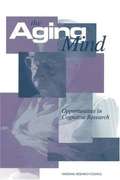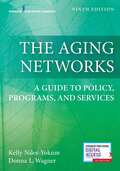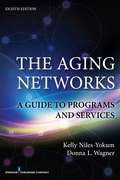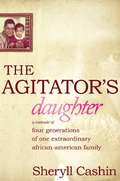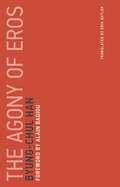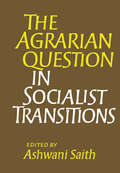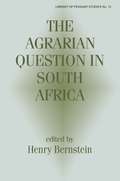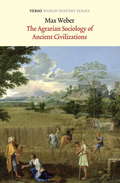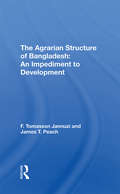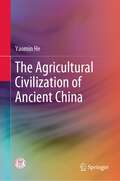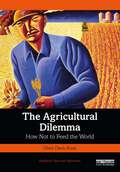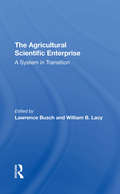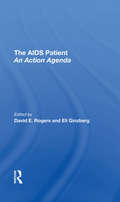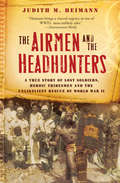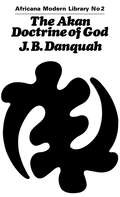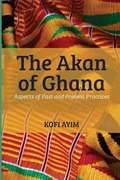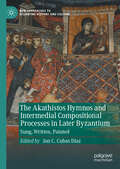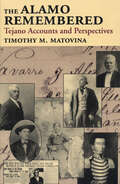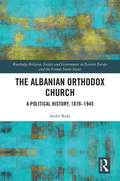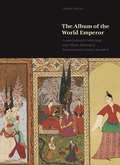- Table View
- List View
The Aging Mind: Opportunities in Cognitive Research
by Committee on Future Directions for Cognitive Research on AgingPossible new breakthroughs in understanding the aging mind that can be used to benefit older people are now emerging from research. This volume identifies the key scientific advances and the opportunities they bring. For example, science has learned that among older adults who do not suffer from Alzheimer’s disease or other dementias, cognitive decline may depend less on loss of brain cells than on changes in the health of neurons and neural networks. Research on the processes that maintain neural health shows promise of revealing new ways to promote cognitive functioning in older people. Research is also showing how cognitive functioning depends on the conjunction of biology and culture. The ways older people adapt to changes in their nervous systems, and perhaps the changes themselves, are shaped by past life experiences, present living situations, changing motives, cultural expectations, and emerging technology, as well as by their physical health status and sensory-motor capabilities. Improved understanding of how physical and contextual factors interact can help explain why some cognitive functions are impaired in aging while others are spared and why cognitive capability is impaired in some older adults and spared in others. On the basis of these exciting findings, the report makes specific recommends that the U.S. government support three major new initiatives as the next steps for research.
The Aging Networks: A Guide To Policy, Programs, And Services
by Kelly Niles-Yokum Donna L. WagnerThis classic text―more relevant than ever as our population rapidly ages―delivers comprehensive and up-to-date knowledge about aging services in the U.S. Written for both students and practitioners of gerontology, along with all professionals involved in the well-being of older adults, this highly accessible book provides a current and detailed description and analysis of local to global services for older people with or without cognitive, physical, or social needs. The Ninth Edition is updated to reflect critical changes to legislation, health care, and recent trends. It focuses on the strengths and diversity of older adults and the role our multilayered aging networks play in advocacy, community independence, and engagement. Commentary and critical thinking challenges from policymakers, program directors, and educators facilitate high-level reasoning and independent analysis of aging networks past, present, and future. The ninth edition also offers enhanced resources including a Test Bank, Instructor’s Manual, PowerPoint slides, and links to video. Additionally, the print version of the book includes free, searchable, digital access to the entire contents.
The Aging Networks: A Guide to Programs and Services
by Mpa Kelly Niles-Yokum Donna L. WagnerThe eighth edition of Aging Networks is suited for use in the classroom, and can be used or adapted for a wide variety of disciplines including gerontology, social work, public health, public administration, nursing and other health professions. This volume is an learning tool, and also a handbook for aging professionals in many fields.
The Agitator's Daughter: A Memoir of Four Generations of One Extraordinary African-American Family
by Sheryll CashinDuring Reconstruction, Herschel V. Cashin was a radical republican legislator who championed black political enfranchisement throughout the South. His grandson, Dr. John L. Cashin, Jr. , inherited that passion for social justice and formed an independent Democratic party to counter George Wallace's Dixiecrats, electing more blacks to office than in any Southern state. His "uppity" ways attracted many enemies. Twice the private plane Cashin owned and piloted was sabotaged. His dental office and boyhood home were taken by eminent domain. The IRS pursued him, as did the FBI. Ultimately his passions would lead to ruin and leave his daughter, Sheryll, wondering why he would risk so much. In following generations of Cashins through the eras of slavery, Reconstruction, Jim Crow, civil rights, and post-civil rights political struggles, Sheryll Cashin conveys how she came to embrace being an agitator's daughter with humor, honesty, and love.
The Agon of Interpretations
by Ming XieWritten by a team of leading international scholars, The Agon of Interpretations explores the challenges and possibilities of critical intercultural hermeneutics in a globalized world. Editor Ming Xie and writers from eight countries on five continents not only lay out the importance of critical hermeneutics to intercultural understanding but also probe the conditions under which a hermeneutics that is both intercultural and critical can be possible. The contributors examine and define critical intercultural hermeneutics as an emerging field from a wide variety of disciplinary perspectives, including phenomenology, critical theory, sociology, object-oriented ontology, and pragmatism. The essays combine philosophical argumentation with historical and intellectual inquiry. Together, the contributors to The Agon of Interpretations demonstrate the value of critical intercultural hermeneutics for enabling intercultural communication, engagement, and understanding.
The Agony of Eros (Untimely Meditations #1)
by Byung-Chul HanAn argument that love requires the courage to accept self-negation for the sake of discovering the Other.Byung-Chul Han is one of the most widely read philosophers in Europe today, a member of the new generation of German thinkers that includes Markus Gabriel and Armen Avanessian. In The Agony of Eros, a bestseller in Germany, Han considers the threat to love and desire in today's society. For Han, love requires the courage to accept self-negation for the sake of discovering the Other. In a world of fetishized individualism and technologically mediated social interaction, it is the Other that is eradicated, not the self. In today's increasingly narcissistic society, we have come to look for love and desire within the “inferno of the same.” Han offers a survey of the threats to Eros, drawing on a wide range of sources—Lars von Trier's film Melancholia, Wagner's Tristan und Isolde, Fifty Shades of Grey, Michel Foucault (providing a scathing critique of Foucault's valorization of power), Martin Buber, Hegel, Baudrillard, Flaubert, Barthes, Plato, and others. Han considers the “pornographication” of society, and shows how pornography profanes eros; addresses capitalism's leveling of essential differences; and discusses the politics of eros in today's “burnout society.” To be dead to love, Han argues, is to be dead to thought itself. Concise in its expression but unsparing in its insight, The Agony of Eros is an important and provocative entry in Han's ongoing analysis of contemporary society.This remarkable essay, an intellectual experience of the first order, affords one of the best ways to gain full awareness of and join in one of the most pressing struggles of the day: the defense, that is to say—as Rimbaud desired it—the “reinvention” of love.—from the foreword by Alain Badiou
The Agrarian Question in Socialist Transitions
by Ashwani SaithFirst published in 1986. Routledge is an imprint of Taylor & Francis, an informa company.
The Agrarian Question in South Africa
by Henry BernsteinThis is the first collection of its kind. It presents a critical political economy of the agrarian question in post-apartheid South Africa, informed by the results of research undertaken since the transition from apartheid started in 1990. The articles, by well-known South African, British and American scholars, cover a variety of topical theoretical, empirical and policy issues, firmly rooted in an historical perspective.
The Agrarian Sociology Of Ancient Civilizations
by Max WeberMax Weber, widely recognized as the greatest of the founders of classical sociology, is often associated with the development of capitalism in Western Europe and the analysis of modernity. But he also had a profound scholarly interest in ancient societies and the Near East, and turned the youthful discipline of sociology to the study of these archaic cultures. The Agrarian Sociology of Ancient Civilizations - Weber's neglected masterpiece, first published in German in 1897 and reissued in 1909 - is a fascinating examination of the civilizations of Mesopotamia, Egypt, Hebrew society in Israel, the city-states of classical Greece, the Hellenistic world and, finally, Republican and Imperial Rome. The book is infused with the excitement attendant when new intellectual tools are brought to bear on familiar subjects. Throughout the work, Weber blends a description of socio-economic structures with an investigation into mechanisms and causes in the rise and decline of social systems. The volume ends with a magisterial explanatory essay on the underlying reasons for the fall of the Roman Empire.From the Trade Paperback edition.
The Agrarian Structure Of Bangladesh: An Impediment To Development
by F. Tomasson Jannuzi James T PeachThe relationship between the agrarian structure of Bangladesh and its problems of rural development is established in this study based on four years (1975-79) of field research. The authors suggest that the concentration of land in the hands of a rural elite is the principal impediment to the participation of weaker sections of the peasantry in economic progress. Tracing the failure of local attempts to change Bangladesh's agrarian structure by legislative means, they outline a modified program for rural development that is linked to agrarian reform. Agrarian reform, Drs. Jannuzi and Peach argue, is the prerequisite for a rural development strategy that provides for both economic growth and improved income distribution; thus, approaches to rural development in Bangladesh that place reliance on new agricultural technology without first changing the institutions that determine peoples' relationships to the land are not viable. The authors' policy recommendations, grounded in new data on the relative proportions of owners of land, sharecroppers, and the landless, are supplemented by a theoretical analysis of the institution of sharecropping and detailed field work methodology.
The Agri-Food System in Question: Innovations, Contestations, and New Global Players (Food and Society)
by John WilkinsonTo mitigate climate, biodiversity, and public health crises, the global agrifood system needs radical change. The Global North remains central to agrifood innovation but new players in the South, especially Brazil and China, will increasingly determine its pace and direction. Investigating climate-controlled agriculture and alternatives to animal proteins, John Wilkinson shows that trade, investment, and innovation in agrifood is reorienting to the South. As the global population becomes increasingly urban, he skilfully illustrates the connections between social movements and technological innovation – and the need for consumer acceptance of new food habits.
The Agricultural Civilization of Ancient China
by Yaomin HeThis book provides a systematic account of the development of agriculture and agricultural civilization in ancient China. It mainly discusses the birth of traditional agriculture, the characteristics and advantages of traditional agricultural economy, traditional agricultural knowledge and technology system, flexible land relations and ownership structure, extensive irrigation system and water conservancy projects, complete policies and measures to emphasize agriculture, the three agricultural expansion processes, the value pursuit of revering agriculture, and the plight and decline of traditional agriculture.
The Agricultural Dilemma: How Not to Feed the World (Earthscan Food and Agriculture)
by Glenn Davis StoneThe Agricultural Dilemma questions everything we think we know about the current state of agriculture and how to, or perhaps more importantly how not to, feed a world with a growing population. This book is about the three fundamental forms of agriculture: Malthusian (expansion), industrialization (external-input-dependent), and intensification (labor-based). The best way to understand the three agricultures, and how we tend to get it wrong, is to consider what drives their growth. The book provides a thoughtful, critical analysis that upends entrenched misconceptions such as that we are running out of land for food production and that our only hope is the development of new agricultural technologies. The book contains engaging and enlightening vignettes and short histories, with case studies drawn from across the globe to bring to life this important debate and dilemma. The book concludes by arguing there is a viable alternative to industrial agriculture which will allow us to meet the world's needs and it ponders why such alternatives have been downplayed, obscured, or hidden from view. This important book is essential reading for all studying and researching food production and agriculture, and more broadly for all interested in ensuring we are able to feed our growing population.
The Agricultural Scientific Enterprise: A System In Transition
by Lawrence M Busch William B LacyThe State Agricultural Experiment Stations have played a fundamental role in the development of science and agriculture in the United States. From their inception in 1887, the experiment stations have attempted to wed basic research with practical application and have helped institutionalize a utilitarian approach to agricultural science. Agricultural research and the new technology it helped to generate were major factors in the transformation of U.S. agriculture into a high technology, mechanized, science-based industry. Moreover, the experiment stations, as the first large-scale, publicly supported scientific research institutions in the United States, have also long been models for scientific institutions both here and abroad. Compiled for the 1987 centennial of the State Agricultural Experiment Stations, this volume critically examines past performance, current issues, and future directions for public agricultural research in the United States. Each of the authors, drawn from disciplines as diverse as philosophy and agronomy, focuses on a central concern for the scientific enterprise. Issues include priority setting, maintaining and promoting disciplinary and interdisciplinary effectiveness, supporting higher education for agriculture, and efficacious dissemination of research findings. By setting these issues in their historical and philosophical context, the volume suggests new approaches for meeting the continuing challenge to achieve equity, efficiency, sustainability, flexibility, conservation, and consistency with other objectives of U.S. society.
The Aids Patient: An Action Agenda
by Eli Ginzberg David E. RogersThis volume seeks a better understanding of the issues and options involved in the generation and transfer of technology to poor small farmers. It is intended to provide a fresh opportunity to develop guidelines for the future design and implementation of rural development investment projects.
The Airmen and the Headhunters: A True Story of Lost Soldiers, Heroic Tribesmen and the Unlikeliest Rescue of World War II
by Judith M. HeimannA true story of downed B-24s in Japanese-occupied Borneo and a native tribe that &“makes us—like the airmen—rethink our definitions of civilized and savage&” (Entertainment Weekly). November 1944: Their B-24 bomber shot down on what should have been an easy mission off the Borneo coast, a scattered crew of Army airmen cut themselves loose from their parachutes—only to be met by loincloth-wearing natives silently materializing out of the mountainous jungle. Would these Dayak tribesmen turn the starving airmen over to the hostile Japanese occupiers? Or would the Dayaks risk vicious reprisals to get the airmen safely home in a desperate game of hide-and-seek? A cinematic survival story featuring a bamboo airstrip built on a rice paddy, a mad British major, and a blowpipe-wielding army that helped destroy one of the last Japanese strongholds, The Airmen and the Headhunters is also a gripping tale of wartime heroism unlike any other you have read.
The Akan Doctrine of God: A Fragment of Gold Coast Ethics and Religion
by J.B. DanquahFirst Published in 1968. Routledge is an imprint of Taylor & Francis, an informa company.
The Akan Of Ghana: Aspects Of Past And Present Practices
by Kofi AyimThe Akan of Ghana: Aspects of Past and Present Practices takes the reader through the ancestry of present-day Akan people - from the influence of ancient Egypt, through the ancient Empires of Western Sudan and into the forest belt of present-day Ghana. Comparative analysis of cultural practices (such as kingship and the royal setup, death, funeral rites, and family structures) between ancient Egypt and present-day Akan people are highlighted. The three elements that make up an Akan person - Blood, Soul, and Spirit - as well as the Akan family structure are elaborately treated, and a clear cultural distinction between an Akan family and clan is explained. Names and their appellations, signs and symbols, as well as some kente designs are highlighted in the appendices. Ultimately, cultural challenges of the Akan in the contemporary world are brought to the fore.
The Akathistos Hymnos and Intermedial Compositional Processes in Later Byzantium: Sung, Written, Painted (New Approaches to Byzantine History and Culture)
by Jon C. Cubas DíazThis book explores intermedial compositional processes in later Byzantium, building on the Akathistos Hymnos. The relationship between the hymn’s text, music, and illustrations has yet to be explored in detail. The contributions here argue that these painted cycles should be studied as a result of interaction between hymnography, psalmody, and visual art, not just as mere illustration of text. Highlighting illuminated and notated manuscript copies of the hymn as evidence for varied liturgical and devotional practices, they examine how icons and murals based on the Akathistos functioned as constituent elements of sacred space. Focusing on intermediality, this book helps bridge methodological gaps between scholarly approaches to medieval culture.
The Alamo Remembered: Tejano Accounts and Perspectives
by Timothy M. MatovinaA collection of all known Tejano accounts of the Battle of the Alamo.As Mexican soldiers fought the mostly Anglo-American colonists and volunteers at the Alamo in 1836, San Antonio’s Tejano population was caught in the crossfire, both literally and symbolically. Though their origins were in Mexico, the Tejanos had put down lasting roots in Texas and did not automatically identify with the Mexican cause. Indeed, as the accounts in this new collection demonstrate, their strongest allegiance was to their fellow San Antonians, with whom they shared a common history and a common plight as war raged in their hometown. Timothy M. Matovina here gathers all known Tejano accounts of the Battle of the Alamo. These accounts consist of first reports of the battle, including Juan N. Seguín’s funeral oration at the interment ceremony of the Alamo defenders, conversations with local Tejanos, unpublished petitions and depositions, and published accounts from newspapers and other sources. This communal response to the legendary battle deepens our understanding of the formation of Mexican American consciousness and identity.“A fascinating and much needed anthology of Tejano accounts of America's most storied battle. . . . There are no books like it in the field, despite considerable publishing on the Alamo and the Texas revolt.” —Paul Hutton, Executive Director, Western History Association“The first full-scale collection offers a rich insight into the formation of Mexican American identity in San Antonio. . . . [The book] speaks eloquently to a general audience trying to gain a more balanced perspective of the storied conflict [at the Alamo].” —Review of Texas Books“Matovina’s message is that historians who concentrate on the question of which side [Tejanos] joined or did not join miss the larger point: for the Tejanos themselves, the choice of sides during the revolt was not the overriding issue of their lives, nor was it the touchstone of their identity. What the Tejano accounts of the Alamo show, Matovina argues, is that the divisions engendered by the revolution failed to destroy what remained “an amazingly cohesive community” in which families, friends, and neighbors split apart by the war reunited in harmony in its aftermath.” —Southwestern Historical Quarterly
The Alamo Remembered: Tejano Accounts and Perspectives
by Timothy M. MatovinaA collection of all known Tejano accounts of the Battle of the Alamo.As Mexican soldiers fought the mostly Anglo-American colonists and volunteers at the Alamo in 1836, San Antonio’s Tejano population was caught in the crossfire, both literally and symbolically. Though their origins were in Mexico, the Tejanos had put down lasting roots in Texas and did not automatically identify with the Mexican cause. Indeed, as the accounts in this new collection demonstrate, their strongest allegiance was to their fellow San Antonians, with whom they shared a common history and a common plight as war raged in their hometown. Timothy M. Matovina here gathers all known Tejano accounts of the Battle of the Alamo. These accounts consist of first reports of the battle, including Juan N. Seguín’s funeral oration at the interment ceremony of the Alamo defenders, conversations with local Tejanos, unpublished petitions and depositions, and published accounts from newspapers and other sources. This communal response to the legendary battle deepens our understanding of the formation of Mexican American consciousness and identity.“A fascinating and much needed anthology of Tejano accounts of America's most storied battle. . . . There are no books like it in the field, despite considerable publishing on the Alamo and the Texas revolt.” —Paul Hutton, Executive Director, Western History Association“The first full-scale collection offers a rich insight into the formation of Mexican American identity in San Antonio. . . . [The book] speaks eloquently to a general audience trying to gain a more balanced perspective of the storied conflict [at the Alamo].” —Review of Texas Books“Matovina’s message is that historians who concentrate on the question of which side [Tejanos] joined or did not join miss the larger point: for the Tejanos themselves, the choice of sides during the revolt was not the overriding issue of their lives, nor was it the touchstone of their identity. What the Tejano accounts of the Alamo show, Matovina argues, is that the divisions engendered by the revolution failed to destroy what remained “an amazingly cohesive community” in which families, friends, and neighbors split apart by the war reunited in harmony in its aftermath.” —Southwestern Historical Quarterly
The Alaskans (The Making of America, Book #10)
by Lee Davis WilloughbyBryan Mathews stood over the dead moose, knowing that they must do something immediately to stay alive--in minutes they'd be frozen corpses in this raging Arctic storm. "Bryan," said Milla, "give me the knife." He watched in amazement as the slender Russian girl slit open the creature from throat to belly. "Help me," she cried. Aroused from his lethargy, Bryan plunged his hands inside the animal and began pulling out its entrails. Milla went to the abandoned dog sled and returned with lap robes. Soon they were huddled together inside their gory refuge, the slit stomach frozen shut. Their body heat began to warm them, but Milla was still not content. "Bryan," she said, teeth chattering uncontrollably, "hold me closer. Warm me." "Milla," he said, rubbing her cold cheeks, "you must stay awake." He pulled her closer, feeling the roundness of her breasts through the wool clothing. Now her cheeks were rosy and she was breathing faster. Bryan felt a new sensation rising unbidden within him ...
The Albanian Orthodox Church: A Political History, 1878–1945 (Routledge Religion, Society and Government in Eastern Europe and the Former Soviet States)
by Ardit BidoReligion in Albania has had a complicated history, with Orthodoxy, Bektashi and Sunni Islam, Catholicism coexisting throughout much of the history of this Balkan nation. This book traces the rise of the Albanian Orthodox Church from the beginnings of Albanian nationalist movements in the late nineteenth century until the end of the Second World War and the Communist takeover. It examines the struggles of the Albanian state and Church to establish the Church’s independence from foreign influence amid a complex geopolitical interplay between Albania, neighbouring Greece and its powerful Ecumenical Patriarchate; the Italian and Yugoslav interference, and the shifting international political circumstances. The book argues that Greece’s involvement in the Albanian "ecclesiastical issue" was primarily motivated by political and territorial aspirations, as Athens sought to undermine the newly established Albanian state by controlling its Orthodox Church through pro-Greek bishops appointed by the Patriarchate. With its independence finally recognized in 1937, the Albanian Orthodox Church soon faced new challenges with the Italian, and later German, occupation of the country during the Second World War: the Church’s expansion into Kosovo, the Italian effort to place the Church under papal authority, and, the ultimate threat, the imminent victory of Communist forces.
The Album of the World Emperor: Cross-Cultural Collecting and the Art of Album-Making in Seventeenth-Century Istanbul
by Emine FetvacıThe first study of album-making in the Ottoman empire during the seventeenth century, demonstrating the period’s experimentation, eclecticism, and global outlookThe Album of the World Emperor examines an extraordinary piece of art: an album of paintings, drawings, calligraphy, and European prints compiled for the Ottoman sultan Ahmed I (r. 1603–17) by his courtier Kalender Paşa (d. 1616). In this detailed study of one of the most important works of seventeenth-century Ottoman art, Emine Fetvacı uses the album to explore questions of style, iconography, foreign inspiration, and the very meaning of the visual arts in the Islamic world.The album’s thirty-two folios feature artworks that range from intricate paper cutouts to the earliest examples of Islamic genre painting, and contents as eclectic as Persian and Persian-influenced calligraphy, studies of men and women of different ethnicities and backgrounds, depictions of popular entertainment and urban life, and European prints depicting Christ on the cross that in turn served as models for apocalyptic Ottoman paintings. Through the album, Fetvacı sheds light on imperial ideals as well as relationships between court life and popular culture, and shows that the boundaries between Ottoman art and the art of Iran and Western Europe were much more porous than has been assumed. Rather than perpetuating the established Ottoman idiom of the sixteenth century, the album shows that this was a time of openness to new models, outside sources, and fresh forms of expression.Beautifully illustrated and featuring all the folios of the original seventy-page album, The Album of the World Emperor revives a neglected yet significant artwork to demonstrate the distinctive aesthetic innovations of the Ottoman court.
The Alchemical Search for the Unified Field: Pythagorean, Hermetic, and Shamanic Journeys into Invisible and Ethereal Realms
by R. E. KretzAn in-depth guide to attaining the enlightenment of the Philosopher&’s Stone• Explores the alchemical mechanics of the Philosopher&’s Stone• Illustrates the sacred geometry behind the creation of the Philosopher&’s Stone• Explains how the Philosopher&’s Stone relates to the Third Eye and how to balance its energies to attain enlightenmentInspired by alchemists of the past, R. E. Kretz explores the mechanics of the Philosophers&’ Stone, the Pythagorean transmigration of the soul, and the alchemical path for attaining enlightenment. The author details an illustrative geometric approach for the creation of the Philosophers&’ Stone using an &“oblong square&” (created by three overlapping circles with the center circle squared), the same shape described in Freemasonry as the form of a Masonic Lodge. He compares this diagram to depictions of the Stone in Mesopotamian, Egyptian, and Hindu cultures as well as floorplans for European cathedrals, showing how the sacred geometry of the oblong square elucidates man as mind, body, and spirit encapsulating a soul.Describing the relationship between the alchemical oblong square and the electrical circuit of the brain, the author details the operative process of the Philosophers&’ Stone, likening it to the servomechanism of the third eye located between the twin pillars of the cerebral hemispheres. He explores how to navigate the twin pillars of the brain to find equilibrium—the third pillar. When the energies of our third eye are in equilibrium, we resonate as a harmonic waveform generator, and he shows how this can be achieved through meditation and the synchronizing vibration of vocal mantras.Drawing on the work of Rosicrucianism, Freemasonry, Hermeticism, sacred geometry, and Native American shamanism, this book presents an allegorical quest for the Philosophers&’ Stone and a path for attaining enlightenment.
